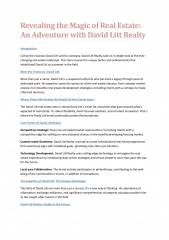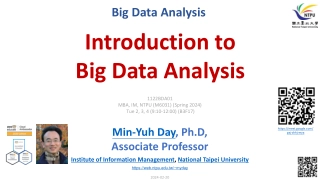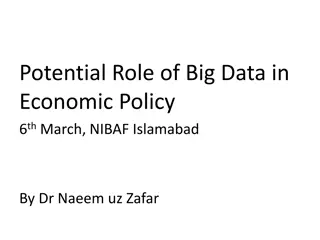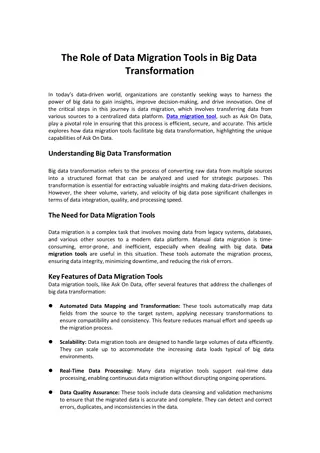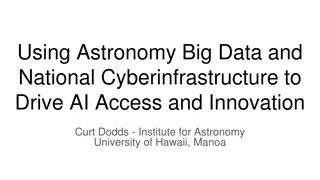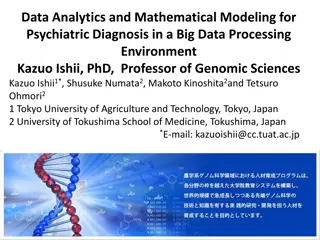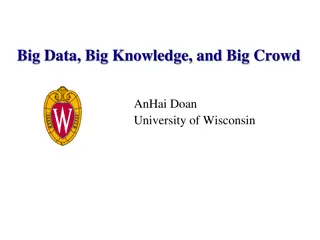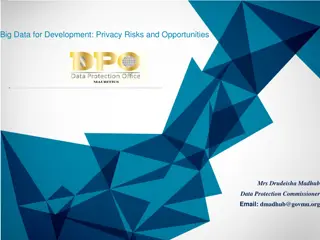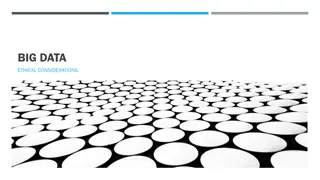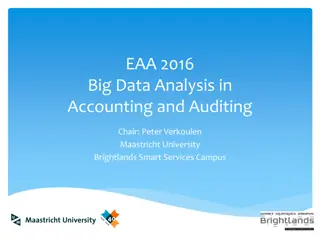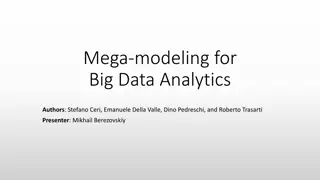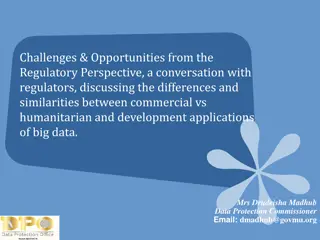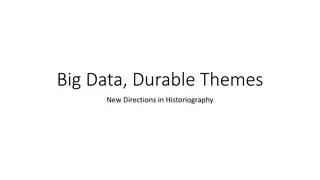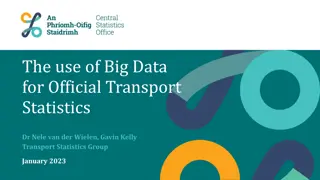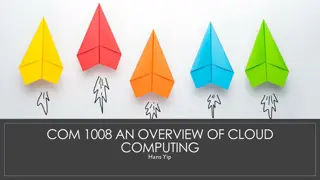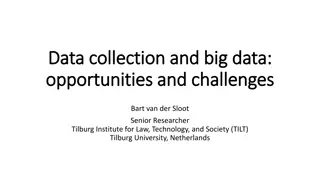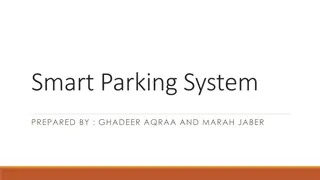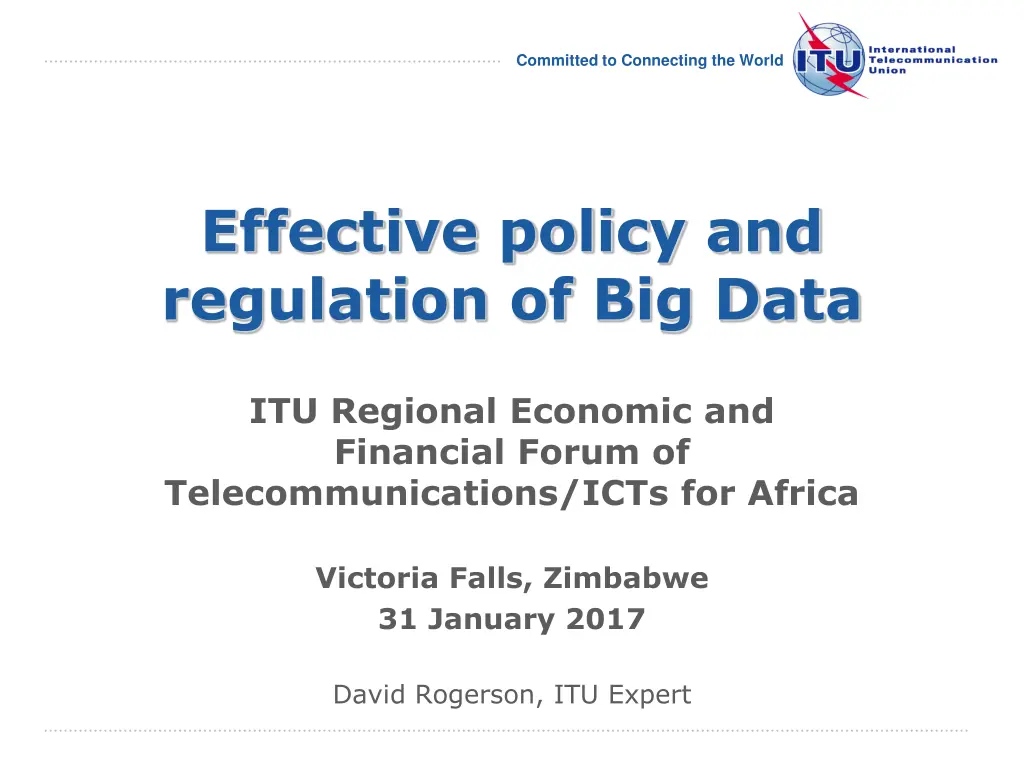
Understanding Big Data: Policy, Regulation, and Implications
Explore the complexities of Big Data, its usage, social and economic impacts, concerns, and the role of policy and regulation. Learn about the characteristics of Big Data and its Three Vs: Volume, Velocity, and Variety.
Download Presentation

Please find below an Image/Link to download the presentation.
The content on the website is provided AS IS for your information and personal use only. It may not be sold, licensed, or shared on other websites without obtaining consent from the author. If you encounter any issues during the download, it is possible that the publisher has removed the file from their server.
You are allowed to download the files provided on this website for personal or commercial use, subject to the condition that they are used lawfully. All files are the property of their respective owners.
The content on the website is provided AS IS for your information and personal use only. It may not be sold, licensed, or shared on other websites without obtaining consent from the author.
E N D
Presentation Transcript
Committed to Connecting the World Effective policy and regulation of Big Data ITU Regional Economic and Financial Forum of Telecommunications/ICTs for Africa Victoria Falls, Zimbabwe 31 January 2017 David Rogerson, ITU Expert International Telecommunication Union
Committed to Connecting the World Agenda What is Big Data? How and by whom is Big Data used? What are the social and economic benefits of Big Data? What concerns does Big Data arouse? How can policy and regulation help? Collaborative methods of regulating Big Data. 2 January 2017
Committed to Connecting the World What is Big Data? Many different definitions have been proposed; none has been universally accepted. A range of common characteristics: Scale: datasets whose size is beyond the ability of typical software tools to capture, store, manage and analyze (McKinsey, 2011) Complexity: large amounts of different types of data produced from various types of sources, such as people, machines or sensors (EC, 2016) Evolving: Most definitions reflect the growing technological ability to capture, aggregate, and process an ever-greater volume, velocity, and variety of data (White House, 2014) It s hard to describe, but you know it when you see it, and what really matters is how Big Data is used. 3 January 2017
Committed to Connecting the World The Three Vs Volume: A vast quantity of data can now be gathered, stored and analysed cost-effectively It is often cheaper to retain rather than destroy old data. Velocity: The speed at which organisations can accumulate, analyse and use new data Improved analytical techniques harness the predictive power of data, sometimes instantaneously. Variety: The breadth of datasets, captured in different ways and from different places Analysed together these greatly enhance the power of data, e.g. to establish preferences and predict behaviour. 4 January 2017
Committed to Connecting the World A massive animal Big Data is hard to describe, but you know it when you see it, and what really matters is how it is used. 5 January 2017
Committed to Connecting the World How and by whom is Big Data used? Everyone collects data and almost all of us store data for later reference and use. Most of us find we can only cope with so much and start deleting/destroying data after a while. Other data lies idle. But with Big Data collection is continuous across multiple devices, storage is virtually unlimited, and ever-more efficient analytical tools mean that it can be mined repeatedly for multiple purposes. 6 January 2017
Committed to Connecting the World The who and why of Big Data Organisations that use Big Data Governments Sample purposes for which they use Big Data Identifying tax evasion, tracking suspects and predicting terrorist activities Creating innovative products and targeting them to customers more precisely Credit risk scoring and fraud detection Selecting students; identifying students at risk of drop-out Predicting predisposition to disease and likely responsiveness to treatment plans Companies Banks Educational establishments Healthcare providers Big Data leads to better and more informed decisions 7 January 2017
Committed to Connecting the World How does Big Data work? Individual Anonymised Aggregated Combined Form filling Form filling Form filling Mobile device location Mobile device location Mobile device location Purchases Purchases Purchases BIG DATA Internet browsing Internet browsing Internet browsing Social media Social media Social media Internet of Things Internet of Things Internet of Things Sensors Sensors Sensors CCTV CCTV CCTV 8 January 2017
Committed to Connecting the World Transformational potential of Big Data Archetype of disruption Domains that could be disrupted Insurance Healthcare Human capital/talent Transportation and logistics Automotive Smart cities and infrastructure Healthcare Retail Education Business models enabled by orthogonal data Hyperscale, real-time matching Radical personalisation Media Massive data integration capabilities Banking Insurance Public sector Human capital/talent Data-driven discovery Life sciences and pharmaceuticals Material sciences Technology Smart cities Healthcare Enhanced decision-making Insurance Human capital/talent Source: McKinsey (2016) 9 January 2017
Committed to Connecting the World What are the social and economic benefits of Big Data? Predicting and warning: Traffic jams; weather systems; climate change; seismic activity. Better decisions, policies and laws simulation of likely outcomes. Personalisation: Tailored adverts and offers; insurance and other financial products based on personal rather than group risk profile. Research and development: E.g. achieving the necessary scale for medical trials; understanding and controlling epidemics Crime prevention: Detecting patterns, deploying police resources, targeting searches Innovation, cost reduction: New services and lower prices as operational efficiency improves. Source: ITU (2015) 10 January 2017
Committed to Connecting the World What concerns does Big Data arouse? How anonymous is it? Is personal data for sale? Leaks, leaks and more leaks Prediction is being treated as reality Where has privacy gone? Who is in control? Big Data relies on trust (to obtain unbiased data) but trust in Big Data is in danger of evaporating. 11 January 2017
Committed to Connecting the World The Big Data balancing act Huge potential Social costs Source: EC (2016) 12 January 2017
Committed to Connecting the World How can policy and regulation help? The role of regulation is to ensure consumer trust in Big Data, so as to achieve its potential and avert its threat There are four main aspects to this work: Ensuring data protection and privacy Informing consumers and giving them control Limiting the use if probabilistic predictions Keeping data markets fluid. Tackling it seriously can attract new business Some companies (e.g. Apple, Salesforce, Zettabox) have opened data centres in the EU attracted by its comprehensive data protection regulations. 13 January 2017
Committed to Connecting the World Ensuring data protection and privacy Data given by a consumer must be used only for the purposes authorised by the consumer User consent must be reasonably obtained not via legalese that no user can reasonably be expected to read Consumers must be given an unconditional opt-out (or/and a proactive opt-in) for any usage of personal data Opt-outs should be built into the design of devices and applications, so users can easily switch their consent on or off, either permanently or temporarily. 14 January 2017
Committed to Connecting the World Informing consumers and giving them control Anonymisation in data analytics is of limited value: a person s identity may be inferred by combining supposedly anonymous data sources, often without the user s awareness. Users must be informed in clear and simple terms how their data will be used: Big data analytics may create such an opaque decision- making environment that individual autonomy is lost in an impenetrable set of algorithms (White House, 2014) Unless there are over-riding public interest concerns (e.g. security) individuals should be informed of: The data held The source of that data The logic of decision-making based on that data. 15 January 2017
Committed to Connecting the World Limiting the use of probabilistic predictions Secondary use of data for trend analysis should be functionally separated from any application of the data concerning the individual. Organisations must be accountable for how they use secondary data for research purposes, beyond simple anonymisation: Consistent with purpose for which the data was given and consent obtained? Is there a legitimate interest in processing the data (absent explicit user consent)? Is re-use of data in a new context adequate, relevant, and proportionate? Accountability is to ethics boards internally and to regulatory authorities, and ultimately courts, externally. 16 January 2017
Committed to Connecting the World Keeping data markets fluid Users should have a right to data portability: Access to all personal data in machine-readable format Ability to modify, delete or transfer their own data Allow them to switch providers Allow them to use third-party applications to analyse their own data. Data on an individual could be held in a personal data space: User-centric safe and secure places to store and trade personal data Allowing individuals to participate in and potentially benefit from the sharing of their own data. 17 January 2017
Committed to Connecting the World Collaborative methods of regulating Big Data Many groups are concerned about Big Data. Their needs are different but not fully incompatible. Collaboration is necessary to maximise national economic welfare. Companies Competition regulators Government BIG DATA Law Consumer bodies enforcement Sector regulators National security 18 January 2017
Committed to Connecting the World General Data Protection Regulation is key Without user confidence and trust Big Data will implode. Other issues (e.g. analytical skills shortages; anti- competitive behaviour) are real but secondary concerns. GDPR hangs on 5 principles for the use of data: Necessity Proportionality Data minimisation Purpose limitation Transparency. DAGDPRTA (GDPR is at the heart of BIG DATA) Source: EU, 2016 19 January 2017
Committed to Connecting the World Thank You If you have any questions please contact me: dar@incyteconsulting.com David Rogerson, ITU Expert 20 January 2017
Committed to Connecting the World Sources http://www.mckinsey.com/business-functions/digital-mckinsey/our- insights/big-data-the-next-frontier-for-innovation (McKinsey, 2011) https://www.whitehouse.gov/sites/default/files/docs/big_data_privacy_report_5 .1.14_final_print.pdf (White House, 2014) https://www.ftc.gov/system/files/documents/reports/big-data-tool-inclusion-or- exclusion-understanding-issues/160106big-data-rpt.pdf (FTC, 2016) http://ec.europa.eu/justice/data-protection/files/data-protection-big- data_factsheet_web_en.pdf (EC, 2016) http://www.mckinsey.com/business-functions/mckinsey-analytics/our- insights/the-age-of-analytics-competing-in-a-data-driven-world?cid=analytics- alt-mgi-mck-oth-1612 (McKinsey, 2016) http://www.itu.int/pub/D-PREF-TTR.16-2015 (ITU, 2015) https://secure.edps.europa.eu/EDPSWEB/webdav/site/mySite/shared/Documen ts/Consultation/Opinions/2015/15-11-19_Big_Data_EN.pdf (EDPS, 2015) http://ec.europa.eu/justice/data-protection/reform/files/regulation_oj_en.pdf (EU, 2016) 21 January 2017

